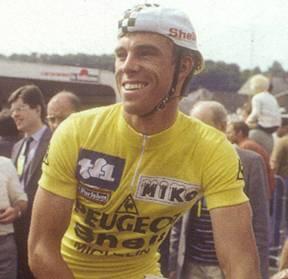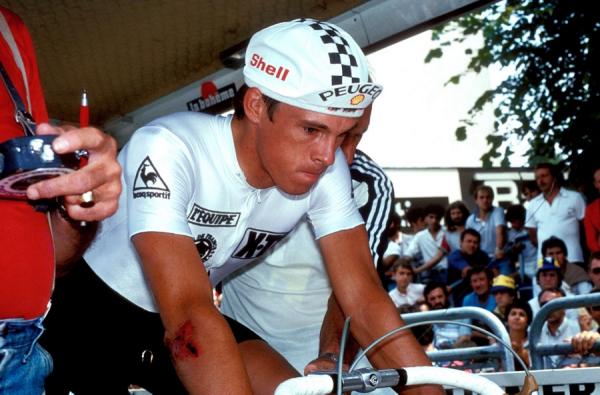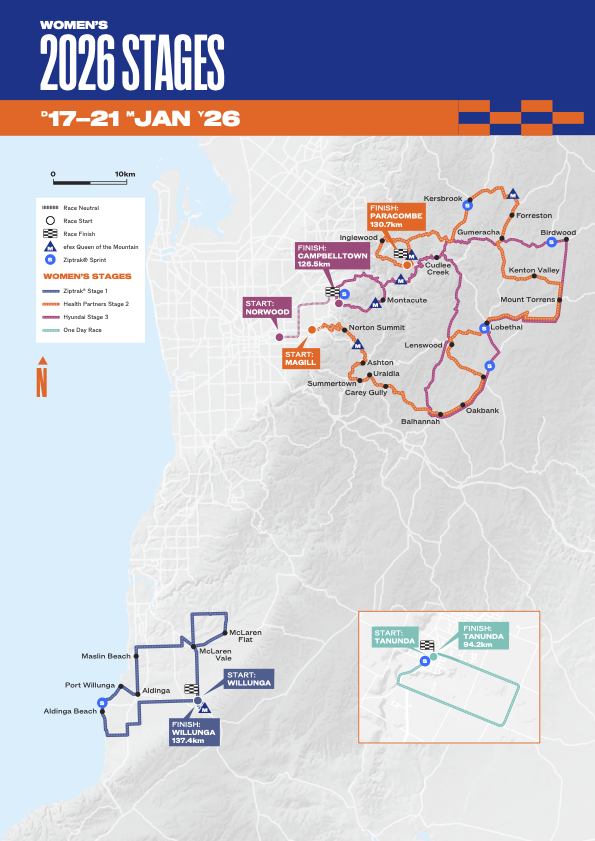Tour de France: Remembering Phil Anderson's day in yellow
The day the Australian became the first non-European to lead the Tour




Rewind 30 years. Reagan, Thatcher, Mitterrand. In Australia, the number one song was Bette Davis Eyes while Raiders of the Lost Ark was number one at the box office. The first American would ride the Tour de France, Jonathan Boyer. And a man by the name of Phil Anderson would enter the stream of the antipodean public's consciousness, along with that of the cycling world. It was on the 5th stage of the 1981 Tour de France that Anderson became the first non-European to don the yellow jersey.
Anderson unveils a 'sleeping giant' - Malvern Star is back, and 'Oppy' rides again
Anderson believes Evans can still make Tour podium
Anderson joins Sports Australia Hall of Fame
Video: Phil Anderson praises Evans' Tour de France victory
Remembering Phil Anderson's first Tour of Flanders podium
12 inaugural inductees for the Cycling Australia Hall of Fame
In The Age, one of the major newspapers from Anderson's Melbourne home, journalist Andrew Rule quoted the 23-year-old's mentor Ted Sanders as saying: "It's like a 19-year-old cricketer from Rome taking 10 wickets at Lord's."
Australian cycling has come a long way Anderson said, talking to Cyclingnews ahead of the 30th anniversary of his achievement.
Cause and effect
To be at the pinnacle of the sporting eye in Australia at the time, your best bet was to perform well at the Olympic level which until Seoul in 1988 (cycling accepted professionals only in 1996), didn't allow for professional athletes to compete. Anderson's focus was on the Moscow Games so he went to France in 1979 to train with the Athletic Club de Boulogne-Billancourt (ACBB) – the home of Jacques Anquetil - which ironically, had only opened its doors to international athletes two years earlier.
Though his French language skills may have been lacking - Anderson says that like most kids at that age he "didn't really see any point in spending time learning a foreign language," when it was taught in second form at school – he thrived racing in Europe.
Armed with only Russell Mockridge's posthumous autobiography, "My World on Wheels" as his only reference for what he was about to experience, Anderson took on the Europe's best amateur racers. It was an altogether very different experience to what the current generation of cyclists are exposed to.
The latest race content, interviews, features, reviews and expert buying guides, direct to your inbox!
"Nothing was really going to prepare me for what I was about to embark on," Anderson explained. "All the kids now have got something to aspire to – they can watch cycling on TV but back then it was hard to get magazines and there was very little news, you might get something three months after the event. So I went over there basically very green not knowing what I was going to get into."
It didn't matter, 1979 was a good year for Anderson winning the Tour de l'Essonne, the Tour de l'Hérault and the unofficial world time-trial championship, the Grand Prix des Nations. The results opened doors with the Peugeot team, which offered the Australian a professional contract. Anderson chose it over Moscow.
The day that changed everything
Having recently turned 23, Anderson was chosen to ride the 68th Tour de France for the Peugeot team after a string of solid results in the lead up. The buzz was contagious, his teammates wagered their entire season on making this one race – Anderson knew he was about to experience something big but nothing would prepare him for his Tour debut.
"It was a big learning curve and every week was a new experience," he explained. Riding as a domestique, Anderson's chief responsibility was to help Frenchman Jean-René Bernaudeau.
"I was basically just a number in the bunch," Anderson recalled. "I wasn't really a contender or an outstanding rider of any great ability or anything; I was just a rider on the page basically."
So it was a surprise to everyone, let alone his DS, that Anderson found himself riding in the front group on stage 5 in the Pyrenees between Saint-Gaudens and Saint-Lary-Soulan. Maurice de Muer's question was a simple one for Anderson, "Where is Bernaudeau?" The Australian actually didn't know but if he looked around him, there was 1976 Tour winner Lucien van Impe along with 1978 and 1979 winner, the incomparable Bernard Hinault, so surely it wasn't a bad thing, right? Right?
"I think I just got wrapped up in the emotion of it all," Anderson told Cyclingnews. "I didn't play the role I was meant to but I was reminded by that time it was too late. The team possibly would have preferred that it wasn't me; that they had Bernaudeau in my place but for me it was certainly a coup for my young career."
Bernaudeau was some way back down the road so for Anderson it was a case of just hanging in there. Meantime, he could play the role of young upstart from the other side of the world, sitting on the wheel of Hinault, Le Blaireau or The Badger over the climbs of the Peyresourde and Pla d'Adet. Hey mate, Anderson gestured to the Frenchman; want a drink, offering his bottle. Surely this guy wasn't serious, Hinault swiping the bottle to the ground.
Anderson wasn't intimidated by Hinault, "I guess I should have been," he admits. "Coming from Australia we just didn't have the traditions and the history of the sport and learn about those sorts of things. I certainly gave him respect but probably not the same amount of respect he may have been used to getting."
Two years earlier, when Anderson had stood on the podium as amateur winner of the Grand Prix des Nations, it was Hinault who had come out on top in the professional ranks.
"I remember shaking his hand; it was kind of a big deal," Anderson said. "Then to get to ride with him at the Tour de France, it was great."
Hinault may have been a little taken aback by the rookie from Peugeot, but Anderson wasn't worried. He would cross the finish line after the 117 kilometres with Hinault and Spanish rider Alberto Fernandez, 27 seconds back on van Impe who'd escaped for a solo victory.
The result was enough to put Anderson in yellow and re-write history, the Australian taking a 17 second lead over Hinault on general classification. The Grand Boucle wasn't just Europe's for the taking.
Anderson describes the feeling of pulling on the yellow jersey as "just elation". To the press, he may have been a novelty, and he was asked to point out where Melbourne was on a map of Australia. Meantime, reporters from his home country were diverted from Wimbledon to cover his progress. If the small Australian media contingent didn't really understand what it was that Anderson had managed to achieve, the man himself too was struggling and "didn't grasp the concept of the enormity of it all." Suddenly, all eyes were on Anderson.
"The European press really got behind me and because of that the public started to follow me as well," he explained. "They saw me as an underdog and a challenger whereas no one in my situation had ever sort of challenged Hinault or had the guts to. It was just a case of someone coming from the other side of the world and taking on the world's best. Now, there are people doing it every day whereas back then, it had never been done before. It was a memorable time."
The magnificent yellow jersey may have been lost the very next day with Hinault clawing his way back to the top of the podium with victory in the 26.7 kilometre individual time trial putting Anderson 13 seconds in arrears, but none of it mattered. The course of both the Tour de France and Australian cycling had been changed forever.
It was only after the 14th stage that Hinault was able to get more than a minute's advantage over the plucky Australian. By the 17th, the dream was well and truly over with Anderson losing 17 minutes as he struggled over the Madeleine, the Glandon and the finale at the top of l'Alpe d'Huez. He would eventually claw his way back and complete the Tour in 10th overall and winner of the youth classification.
When Anderson returned to the Tour in 1982, it was an altogether different experience. He knew what he was capable of, and wanted the rest of the world to know as well.
"I wanted people to understand that it wasn't a flash in the pan and that I'd deserved the yellow jersey and the 10th place the year before."
Anderson did that, winning the second stage and wearing the yellow jersey for eight days, finishing in 5th place overall and again taking out the youth classification.
"I'd like to think it inspired the younger generation at the time, and gave them a bit of hope," Anderson told Cyclingnews. He'd done much more than that.
As a sports journalist and producer since 1997, Jane has covered Olympic and Commonwealth Games, rugby league, motorsport, cricket, surfing, triathlon, rugby union, and golf for print, radio, television and online. However her enduring passion has been cycling.
Jane is a former Australian Editor of Cyclingnews from 2011 to 2013 and continues to freelance within the cycling industry.
